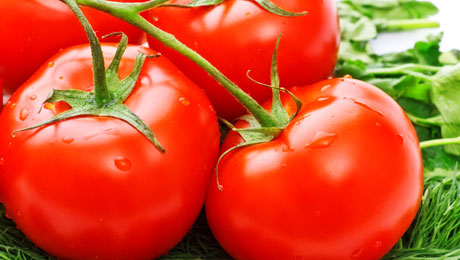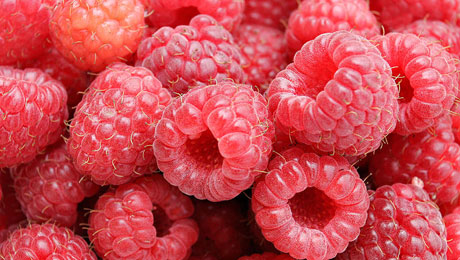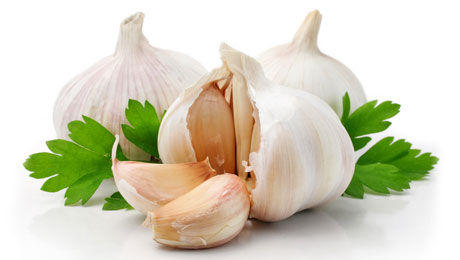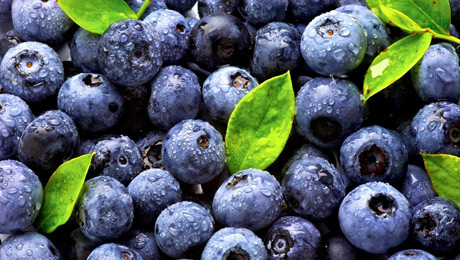Pictures: www.clickatlife.gr
July has already come and this is the perfect time to add seasonal fruit and vegetables to your menu. And since it is always interesting to play with colours, let's put red, white and blue super foods on the table. Which colour do you prefer?
Watermelon
Sweet, juicy and refreshing, watermelon brings the aroma of the summer. With regard to its nutritional value, watermelon is rich in lycopene, an anti-oxidant, which may aid the prevention of cancer and heart diseases, as well as enhance the natural protection of the skin. During a hot summer day, there is nothing better than a slice of watermelon. However, you may also eat it in combination with cheese and mint in order to add a sweet taste to a salty salad.
Tomatoes

Tomatoes, just like watermelons, are rich in lycopene, which is contained in the red colour substance and has antioxidant properties. They are also a good source of vitamin E and niacin. You can enjoy them fresh in salads, in sauces or as part of many recipes. And if you want something light and summery, try a salad with tomatoes or a cold gazpacho.
Strawberries
Strawberries may be small, but they belong to the most important super foods. They are one of the 20 most important fruits with antioxidant properties and a very good source of manganese and potassium. Just one serving contains more vitamin C than an orange. Enjoy them in a fruit salad, on a tart or make yourself an ice-cold sorbet or smoothie. The choices are numerous.
Raspberries

Besides being a very good source of vitamin K and magnesium, raspberries create a feeling of satiety. In the summer, they are just what you need in order not to overeat. Eating raspberries helps the body maintain a healthy weight. They are rich in vegetable fibre, in this way creating the feeling of a full stomach and preventing us from eating more food. Raspberries are perfect for desserts, cupcakes or jams. The summer is a very good season in order to taste ice-cold raspberry soup.
Lychee
This tropical fruit comes from Southeast Asia. Its skin is red and its pulp is white and juicy, with a sweet and sour taste. It is low in calories and rich in vitamin C; it also contains calcium, phosphorus, iron, sodium and potassium. Lychees are eaten fresh, in desserts or fruit salads. You can put them in ice creams, serve them with cream or make compote. You can find them dried, too.
Garlic

Garlic is one of the best foods for the heart. It is known that the use of garlic supplies the body with substances that relax the blood vessels and increase blood flow. And this means that garlic may play a role in reducing the risk of heart diseases. You can include it in many recipes, such as oven-baked dishes, soups or stir-fries, as well as sauces. In order to reduce its distinctive taste, try to grill it.
White peaches
Delicious, cool and nutritional - white peaches are rich in fibre and vitamin C. They also contain proteins, sugar, and vitamin E, a lot of antioxidants, phosphorus, iron and calcium. Enjoy them fresh, in fruit salads or yogurt, for breakfast or as jams, fruit preserves or compote.
Blueberries

Blueberries are probably the most important blue super food with innumerable health benefits. They are rich in antioxidants, containing potassium, magnesium, phosphorus, inorganic acids, metal salts, pectin and vegetable fibres. Because of their nutritional value, they are important for the prevention of cancer, heart and brain diseases. They are also important for the vision and the urinary system. You can put them in fruit salads and pastries, cakes or yoghurt.
Blackberries
Blackberries are yet another fruit rich in antioxidants. They also have anti-aging properties. They contain significant amounts of fibre, potassium, manganese and a lot more nutrients. Not only the sweet juicy part of the fruit is useful – blackberries’ seeds contain polyunsaturated fats, which aid the improvement of the heart’s health. Choose darker blackberries and put them in fruit salads or fresh yogurt, or in cakes or pies.

Figs
Figs contain vitamins A and B6, as well as thiamine helping the body convert carbohydrates into energy. They are a good source of dietary fibre, in this way making us feel satiated and aiding digestion. Mix dried figs with honey and walnuts, add them to your home-made cakes or muffins, or put them in your muesli for breakfast. You can put fresh figs in your salad, or make fig jam.
Eggplant
Eggplant contains important nutrients and is low in calories. It reduces the amount of cholesterol in the blood, aids the brain function and protects the heart. Some people prefer it smoked, others roasted, steamed, curried, pickled or dried or even fried as a snack. You can add it to meat dishes, too. Do not forget, however, that the less you cook it, the more nutritional properties it has. Therefore, avoid overcooking it. If you want to reduce its bitter taste, rub it with salt and put it in a colander for 30 minutes before cooking.